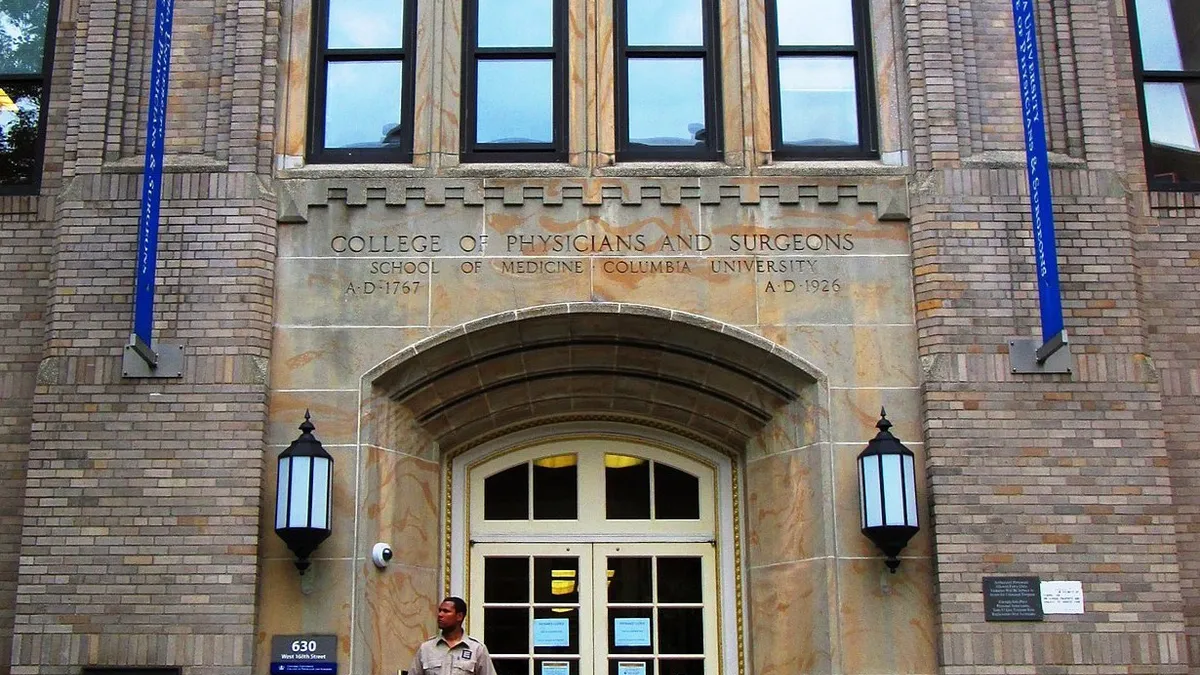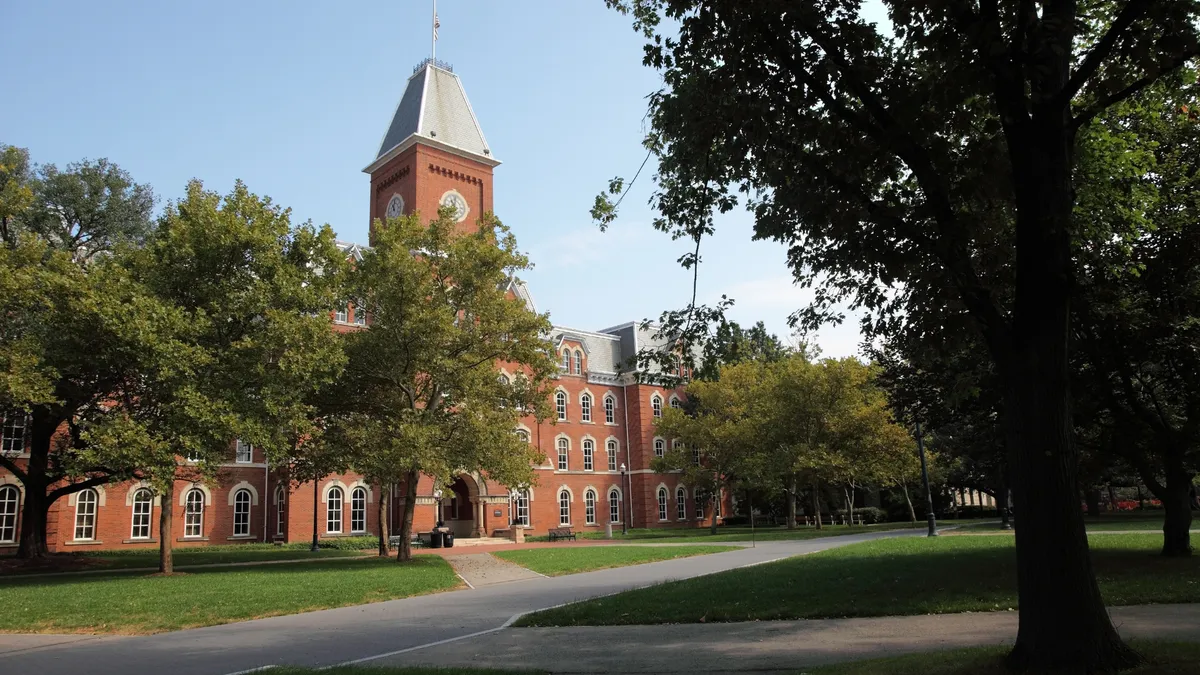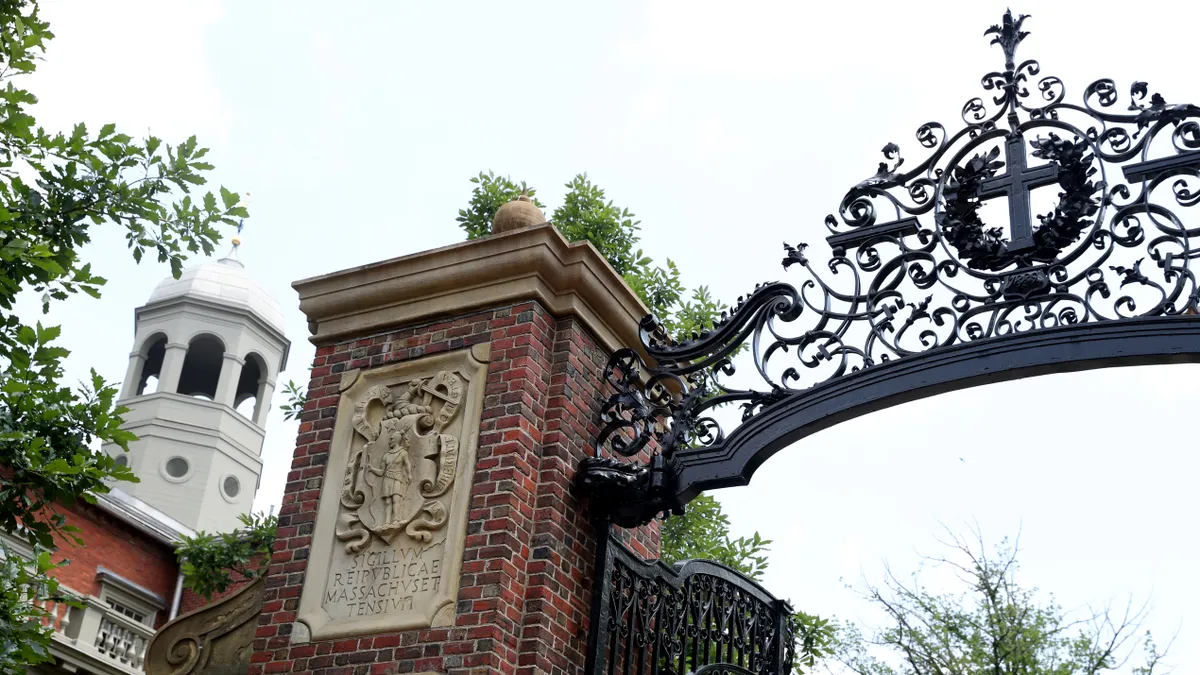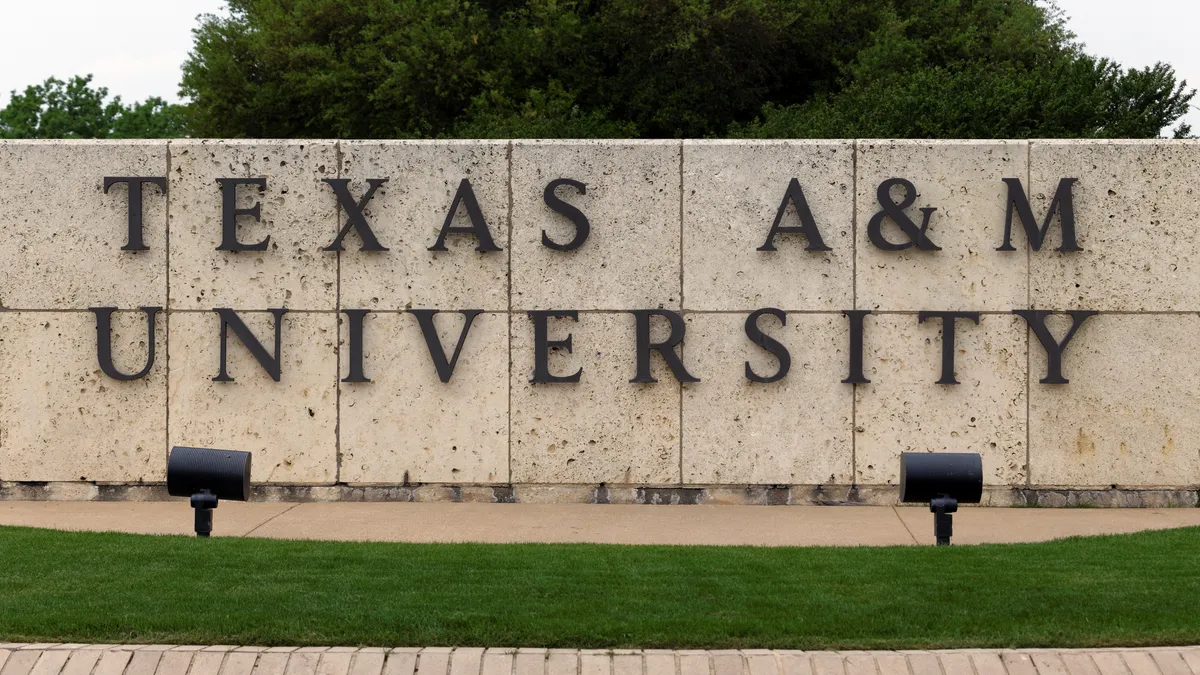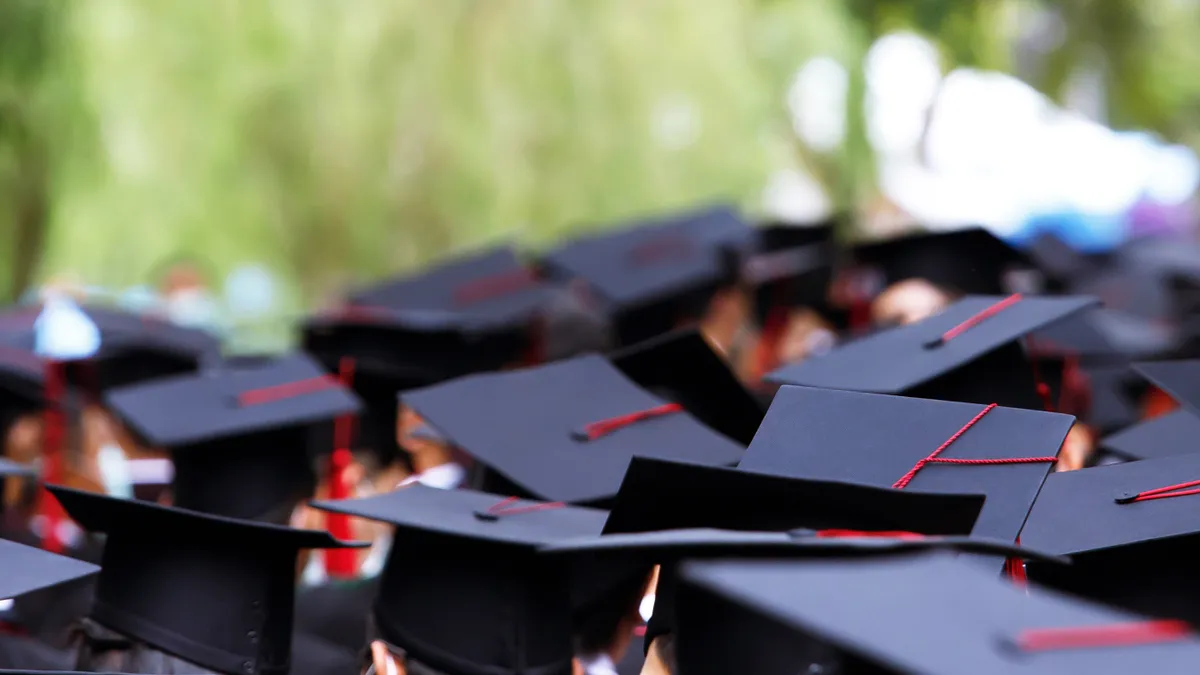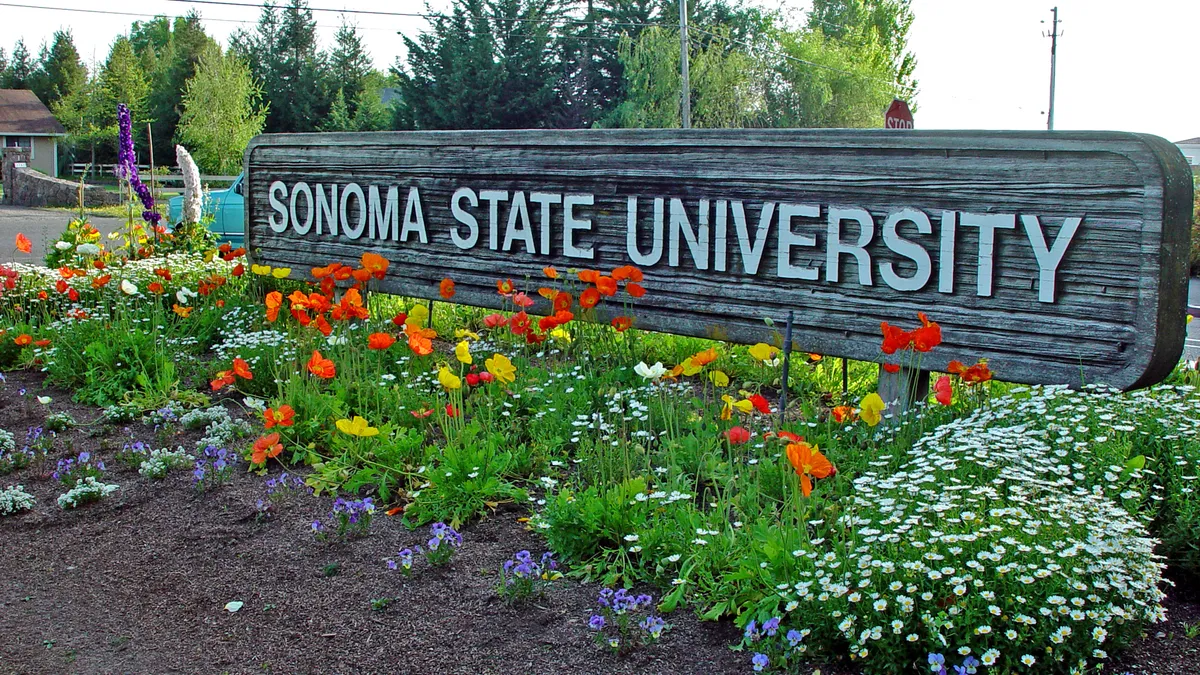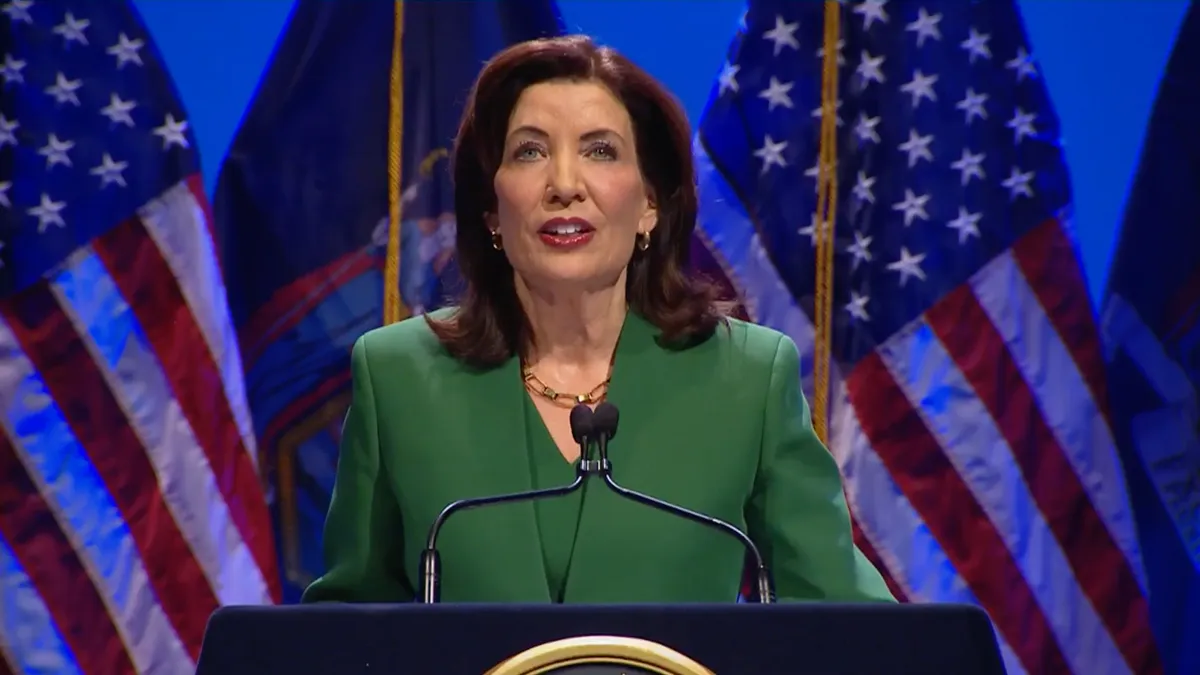It’s no surprise at this point that the pandemic had a negative effect on current college enrollment levels. But a recent study from the Brookings Institution examined how the past few years affected high school graduation and student entry into college — the end of the pipeline between K-12 and college.
Higher Ed Dive talked to Douglas Harris, a nonresident senior fellow at Brookings and one of the report's authors. Harris is also an economics professor and chair of public education at Tulane University, a private nonprofit institution in New Orleans. He discussed the findings and what clues they might offer for college leaders looking to reverse enrollment declines.
This interview has been edited for clarity and brevity.
HIGHER ED DIVE: You looked at how the pandemic affected high school graduation and college entry. What did you find?
DOUGLAS HARRIS: We found that high school graduation rates did not decline and actually picked up slightly in the spring of 2020 — just after the pandemic started to take hold — and then picked up a little bit in the spring of ‘21. And that was a little bit surprising. When you think about the other educational outcomes, there was a lot of concern about students dropping out and it just didn't show up in the graduation rates.
We looked at whether that was an artifact of reporting. A lot of data, especially on high school graduation, is all public school data. So we were a little bit worried maybe this is reflecting transfers out of public to private schools and homeschooling, and so maybe it was misleading. But we also looked at that, and that wasn't what was driving it either.
Then we started to think about, "Why might that be," and outlined some theories, not all of which are testable, but some of them are. One of the biggest explanations is that standards were reduced. In the spring of 2020, high schools basically said, “Just show up and you'll pass your classes.” You didn't really have to do anything to pass I think in most places, so they just made it easier. And that's what kept the graduation rate high and actually probably helped some students who would not have graduated otherwise.
Related to that is cheating. We're considering all this to be part of the lowering of standards. Mostly here I'm referring to an extensive set of anecdotes from my own kids, and from other kids, that this was happening. But it became easier to graduate, and that's why graduations increased.
Were graduation rates different for different subgroups of students?
Yes. And that was the other interesting part. Usually, with educational outcomes, we see that low-income students, students with disabilities, racial and ethnic minorities, have larger negative effects. And we don't see that here. Actually, the students with disabilities, English language learners, African American students, all saw increases in that spring of 2020 and smaller declines in the spring of ‘21. You see the same general pattern with all those years, it's just a little bit more pronounced with those subgroups.
What did you find related to college entry and this increased high school grad rate?
Part of what we were trying to figure out was whether that decline in college enrollment — which had been partially documented elsewhere from the National Student Clearinghouse in particular — whether part of it might have been due to a drop in the number of potential college-goers. The first part of the study says, "Well, that's not what's happening because high school graduation didn't decline."
And then with college entry, we found declines of 16% in two-year colleges and 6% in four-year colleges. And the two-year sector results are driven almost entirely by public, two-year colleges. So the privates, and for-profits especially, were pretty stable in their enrollments.
And we think part of what was going on there — and this shows up in some of the regression analysis — is that those colleges were less likely to go remote. They stayed in-person, partly because they're so tuition-dependent that that was the only way they could survive. Whereas the community colleges could more easily survive with the drop in enrollment and were also more likely to follow what the government rules were with social distancing and to be a little bit more conservative in those decisions.
And what are the implications of your findings for colleges?
The last thing we did in this study was to talk about kindergarten all the way through 16, all the way up through four-year college graduation and look at the patterns, combining what we found with what other studies had found. One of the interesting patterns here was that any entry into an educational institution dropped — so kindergarten dropped, 9th grade dropped, two-year college entry dropped. Of course, four-year college entry dropped. Those are the areas where you see the biggest drops relative to persistence or completion.
So we saw when people had already started in an educational institution that they tended to continue and are more likely to continue. But starting something new was something that people were not inclined to do.
And again, we start to think about why is that? Well, one reason is I think people, especially teenagers, are very dependent on their social relationships, and much more so than either younger kids or older adults. And so if they were already connected to a college, then they want to continue. They want to see their friends. They want to keep moving forward and to have their friends to lean on. But they were less likely to start fresh, right, because it's harder to start relationships with social distancing and a pandemic. It's not an ideal time to start.
This suggests that the enrollment declines are not likely to continue, at least at the same rate. We should see some bounce back because the colleges are no longer operating under these social distancing measures and often going remotely. Since we're taking that away, then we would expect some bounce back in the enrollment numbers.
And there is a flip side of that, which is also speculative, and that's that students became more disengaged during high school and also less academically prepared. That's the learning loss side of this. If they're graduating less prepared — and not just less prepared academically, but also less prepared socially, emotionally — then they may be less likely to go for that reason.
So you have these two countervailing forces at work here. It's not clear which one's going to win or lose, depending on how you look at it. On the one hand, you have the removal of social distancing as something that should lift college enrollment back up again, but you also have the lingering effects of COVID academic social-emotional development that may continue to keep college enrollment down.
Do you think your research offers college leaders any clues as to how they might respond to decreasing enrollment rates?
It suggests that they're going to have the already growing challenge of mental health issues and students not being academically prepared for college and that that problem is going to be worse. And it's gonna be worse for a while, because think about the students in middle school who went through COVID, that their development was stunted also. It's not clear whether there's going to be a bounce back for those students.
I think the measures are actually going to bounce back faster than reality. So for example, test scores. I think test scores are actually going to bounce back relatively quickly because test scores are based on what students learned that year. And so they don't pick up what they didn't learn the prior year.
In high school you take American history one year and world history the next year. Well, you don't really need American history to learn world history. COVID isn't going to show up in your scores anymore. And to some degree, that's true of math and other subjects as well. The test scores are not going to accurately capture the loss.
They're also, in particular, not going to capture the social-emotional side of this, because we don't really have measures of those things. I think on paper, students are going to look better prepared than they are for college, and colleges are going to have to think about ways of addressing that.
Did you have anything else you wanted to say or emphasize about your research?
Two-year colleges and four-year colleges are different, and the students are different. So two-year colleges tend to have more hands-on programs, and that was part of why two-year colleges saw larger drops in enrollment, because it was harder to maintain hands-on programs during the pandemic. So I would expect two-year college enrollment to bounce back a little faster.
Again, there's a flip side of these things, which is that job opportunities have also changed quite a bit. The labor market has changed.
Most two-year college students are more likely than four-year college students to be choosing between work and school. And now the labor market is hot. So wages are up in those lower-wage jobs that high school students can get in. Employers are desperately trying to find people like that.




